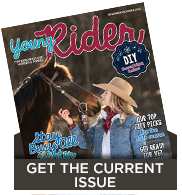Maybe it was a photo of a horse at the Olympics or the Land Rover Kentucky Three-Day Event soaring over a big, wide table or leaping down a 6-foot drop into water … but you got bitten by the bug! Eventing is truly the sport for equine adrenaline junkies. However, there’s a lot you need to know before taking the leap into this sport yourself.
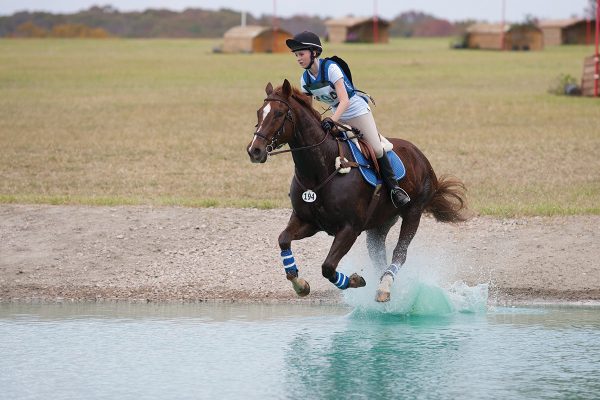
If you have a background in dressage or jumping already, the transition to eventing will be a lot easier. Since eventing is a triathlon for horses and riders with three phases (dressage, cross-country and show jumping), you will need to become adept in three sports that are each pretty different.
If you are ready to dive in, here’s what you’ll need to know before you get started.
The Right Trainer
The very first step is to find a trainer familiar with teaching aspiring new eventers. With so much to learn, you can’t just wing it. Invest in your safety by taking regular lessons from someone with a track record for getting kids successfully around their first events.
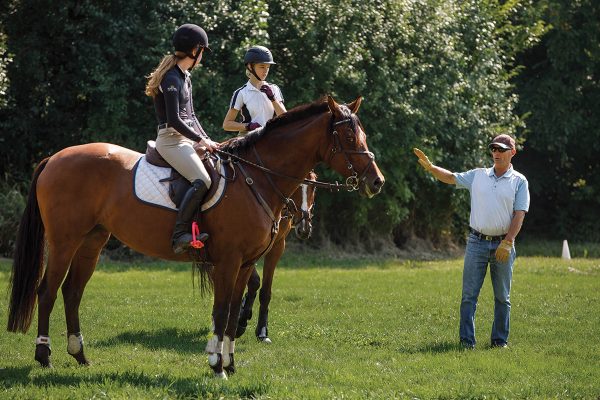
One trainer may last you many years as you advance up the levels, or they may not. But it’s better not to start with someone whose students only compete at advanced shows, or they could expect you to “catch up” quickly before you are ready.
The Right Horse
You won’t get very far in eventing without a safe, experienced horse to learn on. If you don’t own a horse, don’t worry.
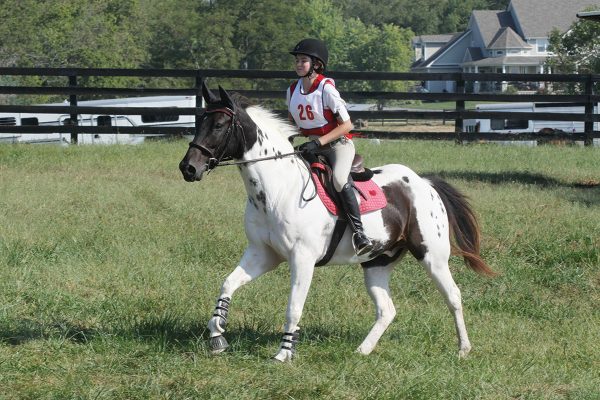
Talk to your instructor about leasing or part-leasing one of their trusty lesson mounts that knows his way around the cross-country course so you can focus on learning the skills that are new to you, instead of teaching a horse at the same time. It will also be a lot more fun that way!
The Right Equipment
Most of the riding equipment you need will be the same as other English sports. For dressage riders, you will need to borrow or invest in an all-purpose or jumping saddle. Jumpers can get by using their saddle for all three phases, including dressage.
Boots, helmets, saddle pads and show coats are the same as other sports. The one big difference is that you’ll be required to wear a foam safety vest on cross-country, whether schooling or showing.
Fortunately, these are becoming popular for all riders, but if you don’t already have one, now is the time to invest before you venture out of a start box. Simple vests cost just over $100, with fancier models available at up to $400. Currently you don’t need ASTM-certified vests at recognized events.
You may have heard about air vests, which can be worn over a foam vest and work like a car’s airbag, but these aren’t required or necessary when starting out. They are also pricier than foam vests and require replacement air canisters (at $30-50 each) every time you fall off and deploy the air vest.
Go Schooling
With your trainer, horse, and safety vest lined up, you’re ready to get out and have some fun! Expect to school cross-country in a group of riders of similar skill level. You may be with adults riding green horses or other kids on seasoned horses.
Each horse and rider pair will warm up and take turns going over a simple log or two before putting together a few jumps in a row. You get the experience of watching the other pairs, which can be very helpful.
Don’t worry if you make a mistake and your horse refuses a jump. Cross-country is very challenging, and everyone learns by trial and error with a good coach explaining what’s working and what isn’t.
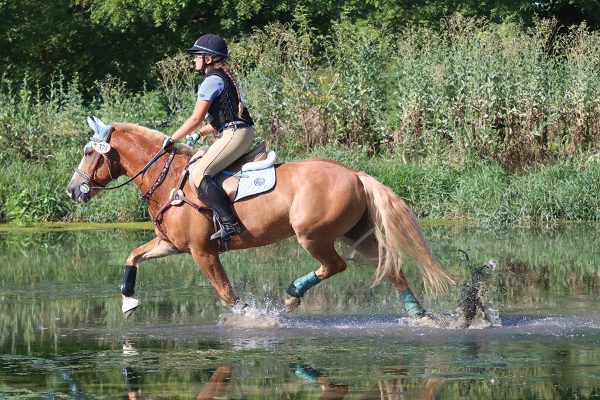
You shouldn’t expect to go racing around at a gallop for quite some time, but you will probably get to wade your horse into the water and let him stand there before trotting in and out of the water’s edge.
By the end of schooling, if all goes well, you’ll be able to jump about five simple small jumps in a row. Congratulations, you may be ready for a tadpole or intro course!
Try a Show
When you’ve schooled enough to be comfortable jumping small cross-country jumps in a controlled canter, you may want to enter a competition.
Some U.S. Eventing Association (USEA)-recognized shows now offer an unrecognized level called Intro or Starter, where the jumps are about 2′. These shows are still run per USEA rules, however, which may seem more nerve-wracking.
You may prefer to start with a local unrecognized show. These are run with more casual rules and dress code, including no braiding for dressage. Some have a no-elimination format, which can ease your mind if you’re worried about your pony having stops on course. Ask your eventing trainer to see if there are some near you.
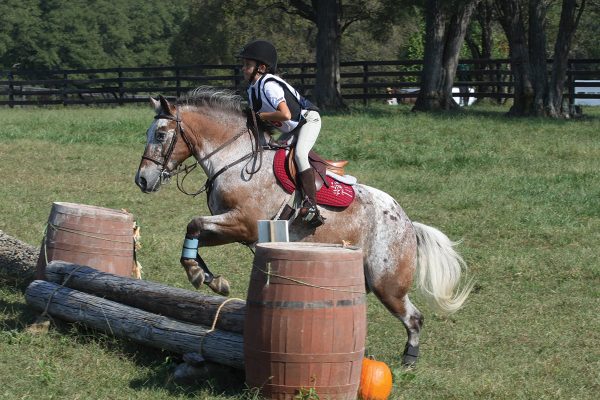
When going to your first competition, try to stay relaxed and have fun. Getting so worked up or nervous that you have a bad experience is the opposite of what you want. Focus on learning the rules and keeping a sense of humor about whatever the day throws at you. If you have a jumping refusal or poor dressage score, that’s totally OK! Think of how far you’ve come and how much you’ll improve next time.
Eventing is a challenging sport for anyone, but it’s also the most rewarding—you trained hard in three completely different phases and have started on the journey of a lifetime.
Learn more at www.discovereventing.com.
This article about how to start eventing appeared in the Fall 2021 issue of Young Rider magazine. Click here to subscribe!

